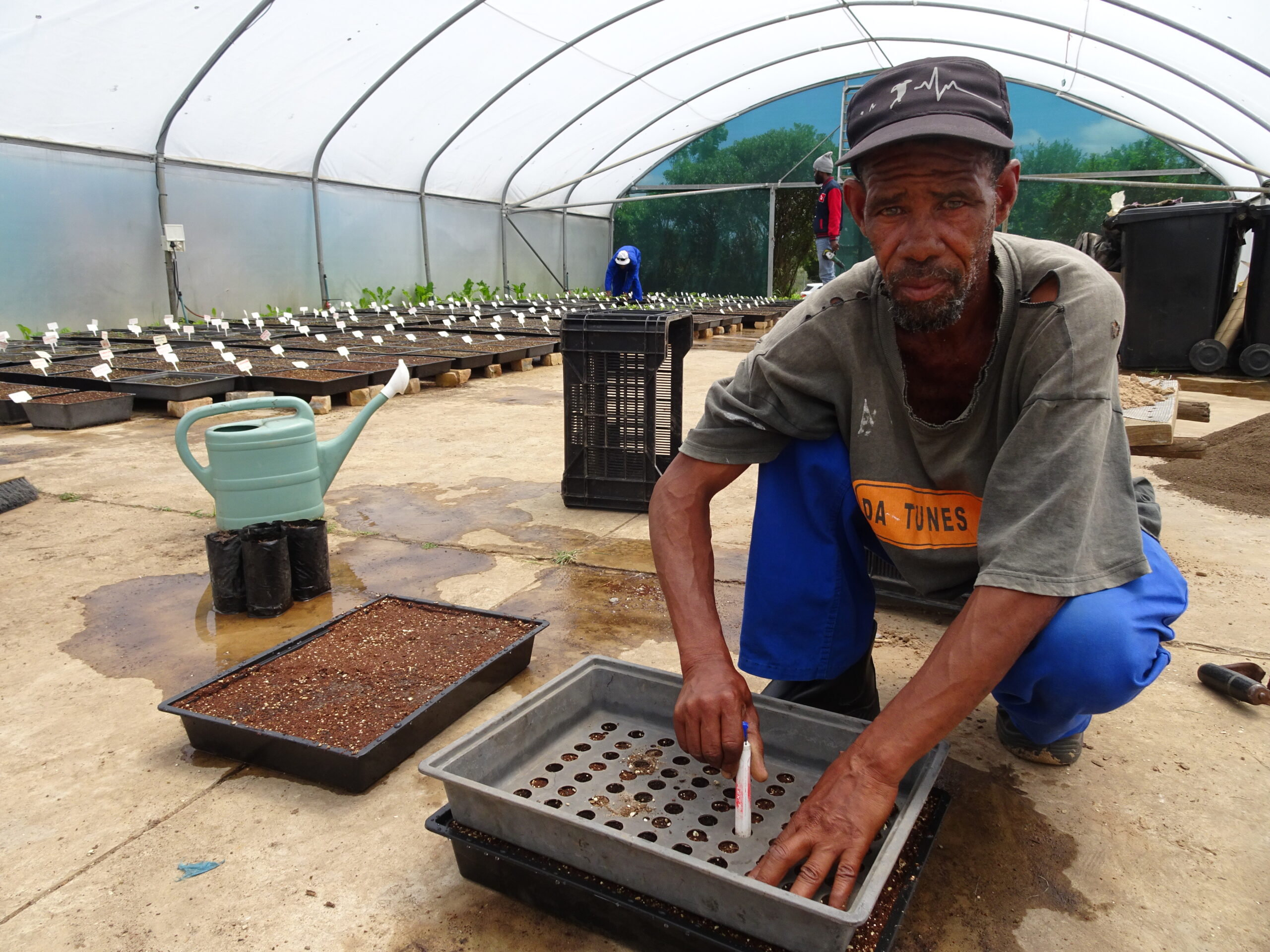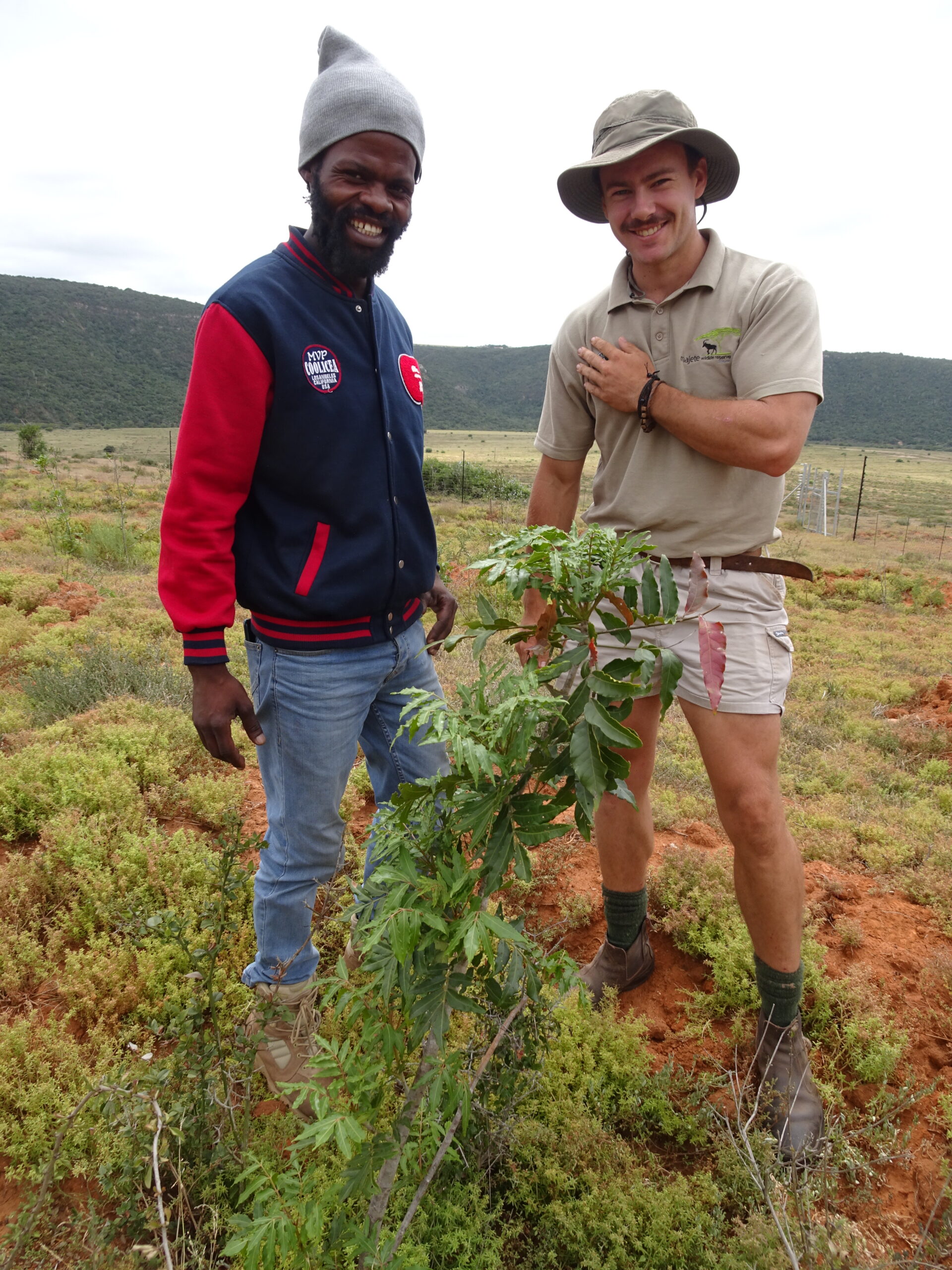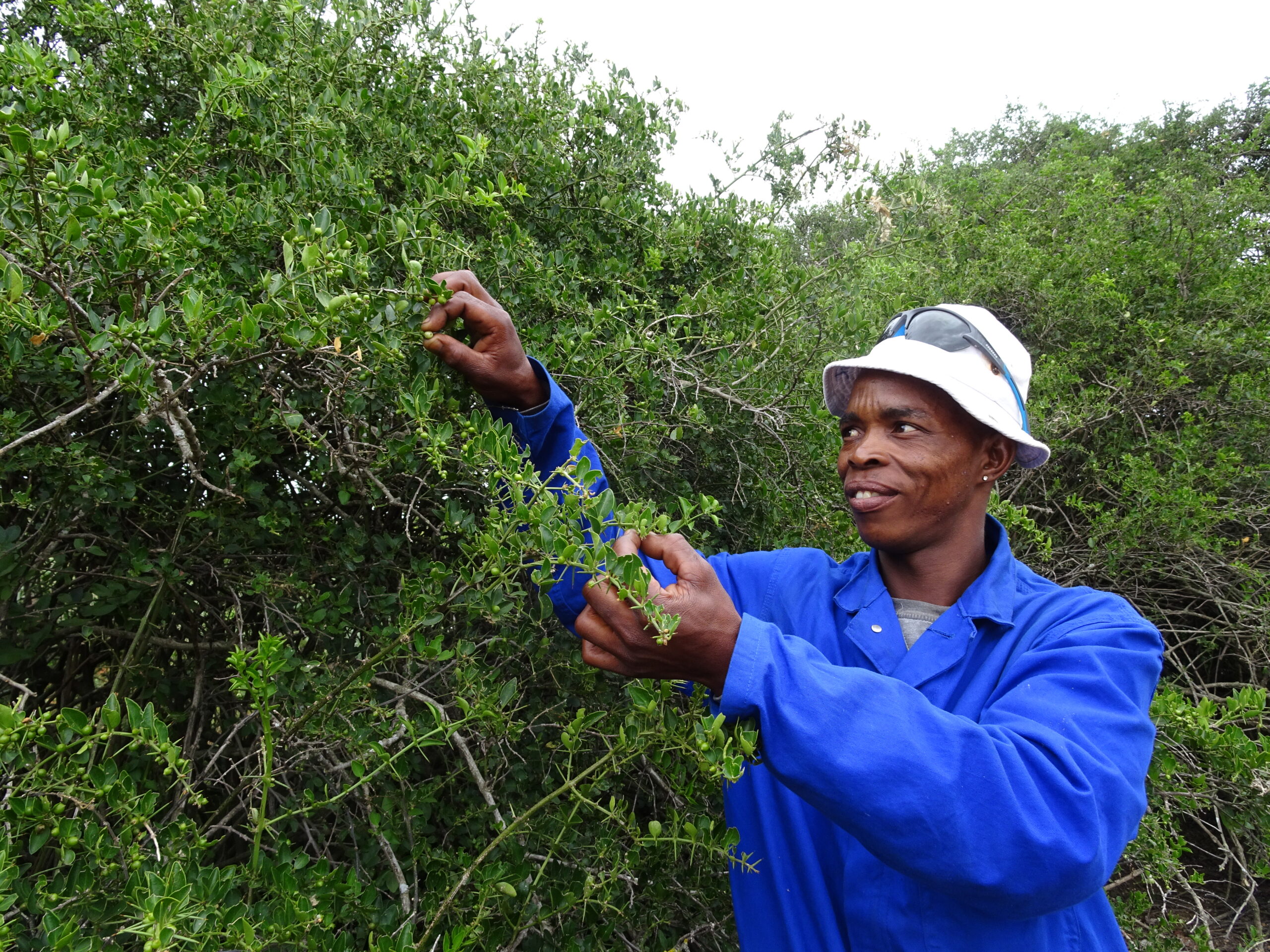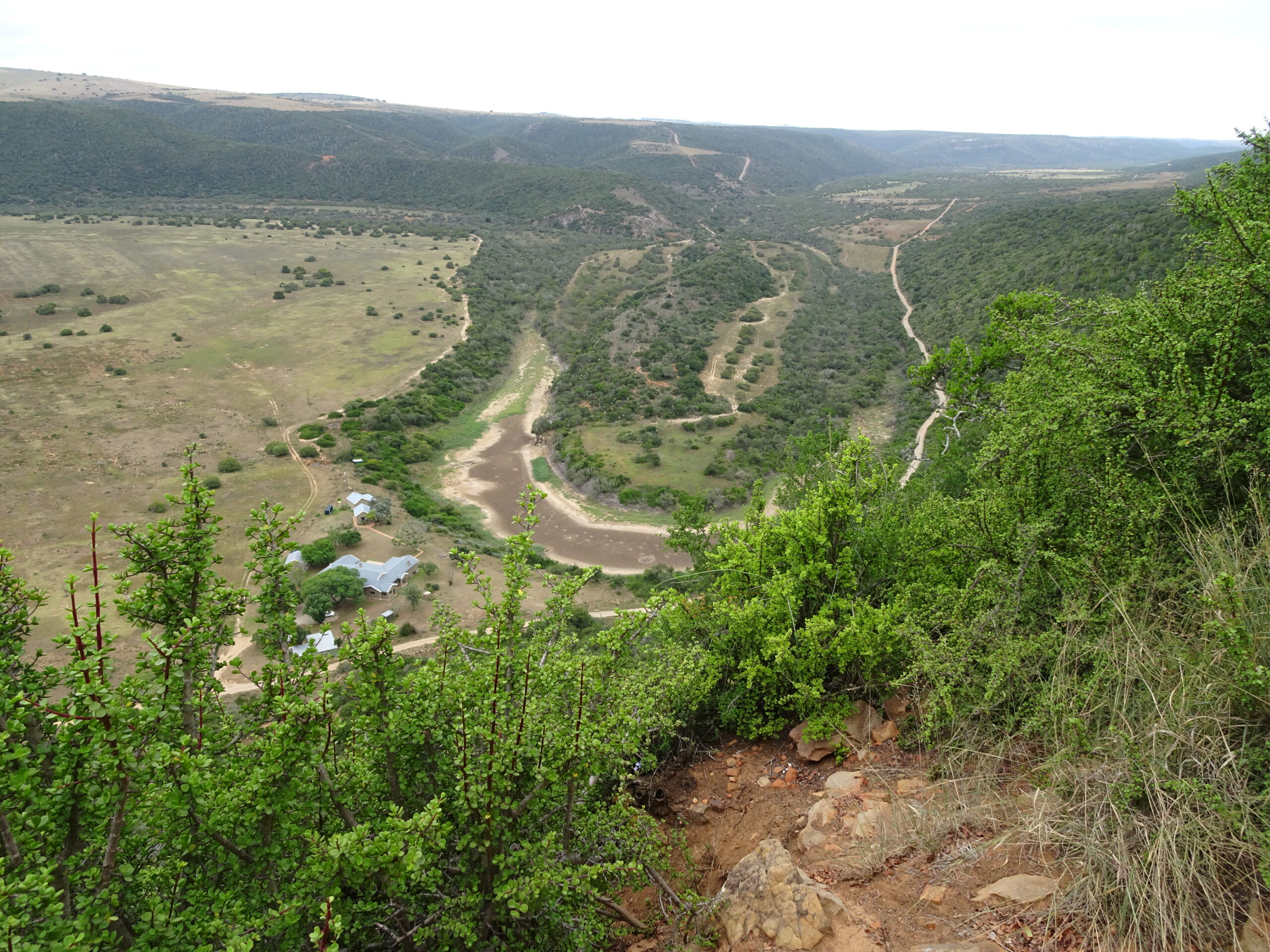by MARION WHITEHEAD
It’s an emotional moment for Luvuyo Ncula of the Rhodes Restoration Research Group (RRRG) when he sees his ‘babies’ growing in the blazing sun at Tanglewood Conservation Area, 47 km outside Makhanda. He nurtured the seeds (collected in local thicket) of a mix of shrubby trees such as needle bush (Azima tetracantha) and larger species such as the Cape ash (Ekebergia capensis) and wild plum (Harpephyllum caffrum) in the tunnels at the Rhodes University Waainek Research Facility until the young seedlings were big enough to go into his nursery’s shadehouse.
They flourished in his special growing medium. It’s a rich mix of potting soil and river sand, plus ground coir and vermiculite for good drainage in the seed trays. When funds were short, he cared for them on his own, seeing they had enough water to grow big and strong enough to take on the tough job of restoring areas of degraded Subtropical Thicket (also known as Albany Thicket).

Photo: Marion Whitehead.
Land that has been overgrazed loses its ability to absorb rainfall and erodes easily. The microbes in the soil die and a hard crust forms on the soil where nothing wants to grow. Or it becomes a dust bowl, equally hostile to plants and animals.
Ncula’s 2 200 young trees had a great future planned for them in 2022 as they were transported to a fenced one-hectare plot at Tanglewood. The area was fenced to prevent kudu and other wildlife from browsing them before they had a chance to get established.
A year later, it’s the nurseryman’s first visit to see how they are doing. A few are standing proud, putting out healthy green leaves. Others are battling in the harsh climate, despite being watered on a regular basis when rain fails.
“I didn’t realise it would be this tough for them out here,” says Ncula, sadly.

“They were doing well until November last year when the summer heat struck. It goes into the high 30s here three or four days a week, even into the 40s,” says Peter Chadwick, programme facilitator for the Conservation Landscapes Institute who oversees management of Tanglewood.
“Water is our biggest challenge,” adds Dylan Blew, manager of Tanglewood Conservation Area. “It takes about two days to water them all with a mix of 50% rainwater and 50% borehole water.”
The borehole on the farm yields salty water, and plants don’t thrive on it. But there’s not enough rainwater to give all the plants.

enough to collect. Photo: Marion Whitehead.
Formerly Driekoppen Farm, Tanglewood Conservation Area was bought by the Tanglewood Foundation to be part of the planned Addo-Fish River conservation corridor. Their broad vision is to protect the land, manage it effectively, restore it where needed and generate socio-economic opportunities to uplift communities in the area.
“Since project inception, more than 80 species of birds and mammals have been added to the original Tanglewood species list” says Chadwick.
The source of the funds for the one hectare plot was carbon offsets from the Kingsley Holgate transcontinental expedition. The nine vegetation types at Tanglewood create an opportunity to do monitoring and research that provides insights into climate change.
Another hectare of 3 350 spekboom (Portulacaria afra) is next door, renowned for its toughness and carbon sequestration abilities. “We also aim to set up a one-hectare plot of grass too and monitor it. These three different plots will be carefully monitored to determine their full restoration potential,” says Chadwick.
Lessons learned from these projects are passed on for the benefit of other landowners and farmers. Practical tips include:
- Plant climax species such as forest trees in gaps between other vegetation and along the edge of existing Thicket (they don’t cope well with 48 degree centigrade heat in December!)
- Use hardy species such as needle bush which produce masses of seeds and are well adapted.
- Protect bare soil with thorn tree branches and toss seeds in.
- Feed cattle seed bales and then send them out to deposit the seeds in their dung.
“Restoration is not simple. It’s costly and needs careful thought. It requires partnerships of skills and funding,” says Chadwick. “What we develop here, the rest of the world can learn from us.”
For more info, see www.rrrg.co.za and www.tanglewood.org.nz/albany-thicket




